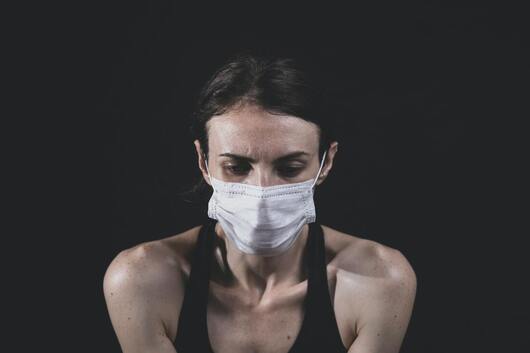|
This blog is meant to be an educational “crash course” in traditional Chinese medicine’s way of looking at psycho-emotional issues and anxiety, which are very common in our society. It is my hope to educate and inspire anyone reading this now to gain interest in the wonders of acupuncture and how it can help vastly improve your life. To do this, I will be covering some basic concepts in Traditional Chinese medicine (TCM), and how they relate to different symptoms so many people experience on a daily basis. As we all know, there are many people out in the world today taking pharmaceuticals such as Lexapro and Xanax (to name a couple) to cope with the stresses and anxiety of the last two years. Acupuncture takes a “whole-body system” view and approach when treating conditions, and psychological or emotional issues are no different. For thousands of years in human history, acupuncture has been used to treat anxiety. Panic and anxiety attacks due to stress are very common these days and acupuncture offers an evidence based, safe, and powerful complement or alternative to taking drugs with potentially harmful side-effects. Below are brief descriptions for Chinese medical patterns and diagnoses. Keep in mind that these are esoteric concepts that were designed before the time of modern science. However, we are in a modern golden age of acupuncture right now, where the marvels of modern medical science and the ancient wisdom of Chinese medicine are integrating and overlapping endlessly. The perspective of evidence-based treatments is not only easier to understand, but also provide a more well-rounded view to provide the highest quality of treatment and care to a patient. If when reading these symptoms and pattern examples you believe they resonate with your experiences, or you identify them to be spot on with issues you are dealing with consistently, please reach out to me because acupuncture will be able to help you. Symptoms, patterns, bodily presentations, and treatments are as follows (but not limited to):
Eyes: no ptosis, clear nodule on medial side of each pupil, eyes appear red, slightly cloudy or murky, and off-white sclera. Nose and Sinuses: clear nasal discharge. Cardiac: mild hypertension, mild palpitations. Gastrointestinal: belching and heartburn. Psychiatric: anxiety, depression. Sleep: difficulty falling asleep and staying asleep. Traditional Chinese medicine (TCM) Disease Category for Anxiety and Depression: “chou chang and xiao tiao” these are Chinese words to describe the pattern of symptoms that fit the diagnostic criteria which leads the acupuncturist to using different sets of points in a treatment. Different points used will facilitate different changes and healing processes in the body, mind, and in turn, the spirit. Common TCM Pattern Diagnosis for anxiety and emotional issues: Liver Qi stagnation and Blood Stasis with Liver fire blazing upwards and affecting the spirit: Difficulty falling asleep from the mind’s vexation from liver fire, the tongue tip is red, the pulse rapid, and eyes are red. Also, sighing frequently and speaking loudly. Liver overacting on Spleen with Spleen and Stomach qi deficiency: The spleen relates to the Yi, which correlates to thoughts and rumination, as well as worry when out of balance. They may also have shortness of breath, fatigue, belching regularly, and bloating. Water/Fire disharmony AKA Heart/Kidney disharmony: The intense aspects of fear and dread can relate to the kidneys. The symptoms of palpitations, insomnia, associated with the state of mental unease are related to the heart. In this relationship, the kidney is like a pot of water and the heart fire is heating it up. The disharmony occurs when there is an issue between the symbiotic nature of the fire heating the pot of water to turn to steam and nourish the heart, while the nourished heart sends fire back down to the kidney to heat the water. Traditional Chinese Medicine uses the qualities of one’s pulse and the presentation of the tongue to hone in on which channels should be the focus of the treatment, and subsequently, which points to use. A combination of acupuncture, Chinese herbal formulas, adjunctive therapies, such as gua sha and tui na, can all be utilized to treat the underlying pattern contributing to the diseased state. Lifestyle recommendations, including supplementation, regular exercise, and dietary changes, as well as other supportive therapies, such as neurofeedback, hypnotherapy, or talk therapy, may also be recommended based on one's unique patterns and presentations. Getting to the root cause of emotional disturbance and turmoil can be complex and challenging. Please reach out for support or if you have any questions or feedback. I am here to help support patients and navigate these trying times. Reference List: Maciocia, G. (2005). The Foundations of Chinese Medicine: A Comprehensive Text for Acupuncturists and Herbalists. London, UK: Churchill Livingston. Retrieved from: https://www.sciencedirect.com/science/article/pii/S2095754817302193 Ribas VR1, Ribas RG2, Nóbrega JA3, da Nóbrega MV3, Espécie JAA4, Calafange MT4, Calafange COM4, Martins HAL1. Pattern of anxiety, insecurity, fear, panic and/or phobia observed by quantitative electroencephalography (QEEG). Ribas VR, et al. Dement Neuropsychol. 2018 July, 264-271. doi: 10.1590/1980-57642018dn12-030007.
0 Comments
Leave a Reply. |
AuthorWelcome to the Mindful Medicine blog! Here our holistic practitioners will provide you with health and wellness education, which we hope will be valuable on your journey towards greater health. Feel free to contact us with any feedback or questions. Thanks for being here. Archives
September 2023
Categories |



 RSS Feed
RSS Feed